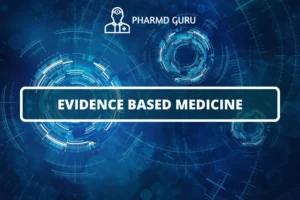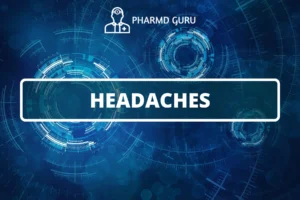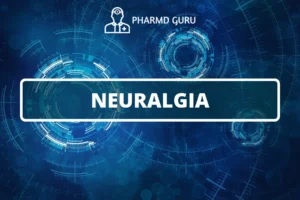Anemias are a group of disorders characterized by a decrease in the number of red blood cells or a decrease in the amount of hemoglobin within the red blood cells. These conditions can result from various causes, including nutritional deficiencies, chronic diseases, genetic disorders, or medications. Understanding the etiopathogenesis, or the underlying causes and mechanisms, of anemias is essential for their diagnosis and treatment. In this article, we will explore the etiology of anemias, the pathophysiological processes involved, and the pharmacotherapy options used in their management.
SCROLL DOWN TO THE BOTTOM OF THIS PAGE FOR ACTUAL NOTES.
Table of Contents
- Introduction
- Understanding Anemias
- Etiology of Anemias
- Pathophysiology of Anemias
- Clinical Presentation
- Diagnostic Approaches
- Treatment Options
- Pharmacotherapy for Anemias
- Supportive Care
- Prevention and Lifestyle Changes
1. Introduction
Anemias are a common group of blood disorders characterized by a decrease in red blood cell count or hemoglobin levels. They can lead to reduced oxygen-carrying capacity in the blood, resulting in fatigue, weakness, and other symptoms. Understanding the etiopathogenesis and available pharmacotherapy options is crucial for effectively managing anemias.
2. Understanding Anemias
Anemias can be classified into various types based on their causes and characteristics. Some common types of anemias include iron-deficiency anemia, vitamin B12 deficiency anemia, and hemolytic anemia. Each type has specific underlying causes and treatment approaches.
3. Etiology of Anemias
Anemias can arise from a variety of factors, including:
- Nutritional deficiencies: Inadequate intake or absorption of essential nutrients such as iron, vitamin B12, or folate can lead to anemias.
- Genetic disorders: Inherited conditions like sickle cell anemia or thalassemia affect the structure or production of red blood cells, leading to anemia.
- Chronic diseases: Certain chronic conditions, such as chronic kidney disease or autoimmune disorders, can interfere with red blood cell production or survival.
- Medications and toxins: Some medications or exposure to toxins can disrupt normal red blood cell function or production.
4. Pathophysiology of Anemias
The pathophysiology of anemias varies depending on the specific type and underlying cause. Some common mechanisms include:
- Impaired red blood cell production: Anemias may result from reduced production of red blood cells in the bone marrow due to nutritional deficiencies, bone marrow disorders, or chronic diseases.
- Increased destruction or loss of red blood cells: Hemolytic anemias occur when red blood cells are destroyed prematurely or lost through bleeding, leading to a decrease in overall red blood cell count.
- Altered red blood cell morphology or function: In certain genetic anemias, such as sickle cell anemia, the shape or function of red blood cells is abnormal, affecting their ability to transport oxygen effectively.
5. Clinical Presentation
The symptoms of anemias can vary depending on the severity and underlying cause but may include:
- Fatigue and weakness
- Pale skin or mucous membranes
- Shortness of breath
- Rapid or irregular heartbeat
- Dizziness or lightheadedness
- Cold hands and feet
- Headaches
6. Diagnostic Approaches
Diagnosing anemias involves a combination of medical history, physical examination, and laboratory tests. Diagnostic approaches may include:
- Medical history: Evaluating symptoms, nutritional status, and family history of anemias.
- Physical examination: Assessing signs such as pale skin, rapid heartbeat, or enlarged spleen.
- Complete blood count (CBC): A blood test that measures red blood cell count, hemoglobin levels, and other parameters.
- Additional blood tests: Tests to assess iron levels, vitamin B12 and folate levels, and other markers of anemia.
7. Treatment Options
The treatment of anemias aims to address the underlying cause and improve the overall red blood cell count and hemoglobin levels. Treatment options may include:
- Nutritional supplements: In cases of nutritional deficiencies, supplementation with iron, vitamin B12, or folate may be prescribed.
- Medications: Some anemias may require specific medications to stimulate red blood cell production or manage underlying conditions.
- Blood transfusions: In severe cases or acute blood loss, a blood transfusion may be necessary to restore red blood cell levels quickly.
- Bone marrow transplant: For certain genetic or acquired anemias, a bone marrow transplant may be considered as a potential curative treatment.
8. Pharmacotherapy for Anemias
a. Iron supplements:
- Iron-deficiency anemia is often treated with oral or intravenous iron supplementation to replenish iron stores and support red blood cell production.
b. Vitamin B12 supplements:
- Vitamin B12 deficiency anemia may require oral or intramuscular vitamin B12 supplementation to correct the deficiency and promote red blood cell production.
c. Erythropoiesis-stimulating agents (ESAs):
- ESAs are medications that stimulate red blood cell production in individuals with chronic kidney disease or certain other conditions causing anemia.
d. Immunosuppressants:
- In cases of immune-mediated anemias, immunosuppressive medications may be prescribed to suppress the immune response and prevent red blood cell destruction.
9. Supportive Care
Supportive care measures can aid in managing anemias:
- Dietary changes: A well-balanced diet rich in iron, vitamin B12, and folate can support red blood cell production.
- Lifestyle modifications: Managing underlying conditions, reducing stress, and avoiding triggers that may exacerbate anemia can help improve overall well-being.
- Regular follow-up: Close monitoring of blood counts and adherence to prescribed medications and supplements are important for ongoing management.
10. Prevention and Lifestyle Changes
Preventing certain types of anemias involves:
- Nutritional awareness: Consuming a varied and balanced diet rich in iron, vitamin B12, and folate.
- Safe practices: Taking precautions to prevent iron-deficiency anemia due to blood loss, such as safe blood donation practices and proper management of menstrual bleeding.
- Genetic counseling: For individuals with known genetic anemias, genetic counseling and family planning can help manage the risk of passing the condition to future generations.
ACTUAL NOTES:




